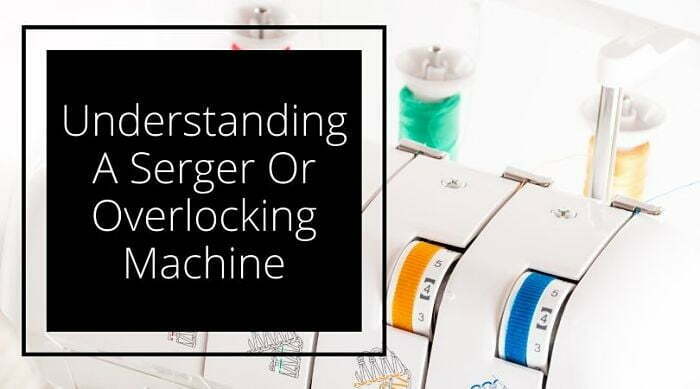Understanding a Serger or Overlocking Machine
A serger or overlocking machine isn’t your average home sewing machine. A serger does sew, but it also automatically cuts the seam allowances while encasing the raw edges of the fabric to prevent fraying – and all of this at speeds of between 1,300 and 1,700 stitches per minute.
While a serger alone can accomplish certain sewing projects, it’s not meant to replace your home sewing machine. When used in combination, however, they make great partners because an overlock machine cannot be used for topstitching, inserting zippers and facings, or creating buttonholes. With up to eight thread spools and two needles, a serger can look intimidating, but understanding some of the basic principles of these wonderful machines is half the battle.
About Those Multiple Threads
Instead of using a single bobbin, upper and lower looper threads are used to create stitches that lock the threads in place. Like the topstitch on sewing machines, the overlock stitch is the most basic on a serger, hence the term “overlocker”. Depending on the model of your overlocking machine, you may have between two to eight thread spools and two or more needles to work with. The number of threads your machine uses gives you far more stitching options – especially if you plan to do a lot of decorative stitching.
The Differential Feed
This is a must-have function for most serger owners because it gives you more creative options by controlling the speed of the dual feed dogs. By adjusting the feed to the proper setting for the fabric you’re working on, such as knits, you can avoid bumps and puckers. Alternately, when sewing wovens, additional adjustments will automatically create smooth, evenly stitched ruffles or decorative lettuce leaf or waved edges.
Basic Stitches
Depending on the make and model, sergers feature many different and decorative stitch types, but the following four are the stitches most commonly used.
- Overlock Stitch: Using between one to five threads, this stitch encases the seam, locking the raw edge of the fabric with thread. In addition to preventing unraveling, this stitch leaves your project with a decorative, professional finish.
- Cover Stitch: This stitch is typically used to create a hem such as those found on manufactured T-shirts. The cutting knives aren’t necessary when using this stitch because the raw edges of the fabric are folded under the hem.
- Flatlock Stitch: The flatlock or side-by-side stitch is used to join two pieces of fabric together. Again, there is no seam allowance to cut, as the raw edges of each fabric piece butts against the other while being joined. This decorative stitch is often used on manufactured sportswear.
- Rolled Hem Stitch: This stitch encases the raw edge of fabric with a minute roll of thread. Two-thread rolled hems are perfect for delicate fabrics like batiste, lightweight organdy or chiffon because only a minimal amount of thread is added to the garment. The three-thread stitch is more suited to finish linen napkins, placemats and other projects.
Threading the Serger
One of the most common complaints from serger owners is initially mastering the often-difficult art of threading the machine. While it’s true that some machines without an automatic threading feature do take some time to thread properly, it’s worth the time and practice it takes to do it right. Most machines include color-coded threading diagrams on or in the casing for easy reference. One of the most important tips every new serger owner should follow is to read the manual (and instructional DVD, if included) before starting. Both should include step-by-step instructions on mastering machine threading and proper tension settings.
If you love sewing and are ready to add another skill to your experience, don’t allow yourself to be intimidated. Choose your machine. Taking the time to learn how it works is the first step in completing successful projects.

